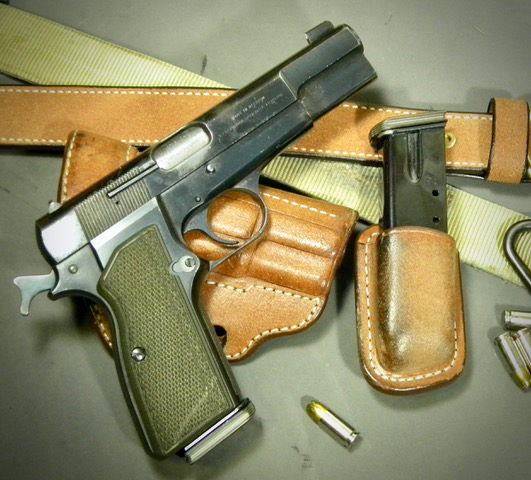 |
Last week we discussed Jeff Cooper’s contributions to pistolcraft; he is the father of the “Modern Technique.” He opened the first commercial firearms training facility - the American Pistol Institute/Gunsite – that was open to civilians. Armed professionals - law enforcement and security personnel – and your average guy interested in the defensive use of firearms could attend. Notice that it was for civilians, not military applications. Yes, military personnel did attend, but the focus was always defensive use of the firearm, plus classes for big game hunting and such. Then, somewhere along the way, things got a little sideways. Over time principles, tactics and techniques that are only used in the military, or SRT law enforcement teams began to appear in “defensive” classes. Today the line is blurry and hard to see, especially for those who don’t really know the difference between “combative” and “defensive.”
First, there was the “traditionalists” or “Pre-Modern” era. This was the old bladed stance, single hand firing with focus on accuracy, as opposed to a fighting stance. This is also where we begin to see advances like Sikes and Fairbain’s techniques – a crouching stance, but still single hand. Applegate is here too. Then, the “Modern Technique,” and Coopers contributions. Today we’re in the “Post Modern” period. Things have advanced beyond “Modern.” But, you ask, “Isn’t this a good thing?” Not necessarily. Advancing is not always progress, particularly if you lose sight of your destination.
During the early 2000’s instructors started including – and students began demanding – more “combative” oriented classes. As the number of instructors began to rise, due to a variety of factors, many began including, and in some cases creating, “dynamic” principles and techniques. Think combative/military. All of this in order to attract more students. You also see the rise of instructor “personalities,” guys who developed “tactical” personas. It became a “my dogma” vs. “your teachings,” much like the early days of the Christianchurch.
Of course, this was all driven by the market. Using your handgun to Defend yourself or family against a violent attacker in a dark parking lot is kind of boring compared to runnin’ ‘n ‘gunnin’ in all your tactical gear while engaging multiple threats. The students in defensive classes began to look like special forces “operators” or members of a SWAT team.
Make no mistake, when dealing with a violent attack your response must be aggressive. But your goal is to break contact as soon as possible, retreat and find a place you can safely hold and if necessary easily defend. You aggressively move, in order to avoid or escape, get to cover or be a moving “target” for the threat(s). The situation may require you to shoot, in which case you’ll likely fire three to four shots - accurately. There may be more than one threat, but it’s the exception when someone has to shoot more than one of them. You probably won’t need to reload, but it may be necessary to clear a malfunction. Knowing the basics of treating a severe injury may be more important than knowing how to shoot.
So, what does all this have to do with you? Selecting the type class and training you should attend is based on your anticipated use of the firearm. If you’re looking at honing your skills for self-defense you need defensive instruction. This means wearing the same gear you carry every day. You train, practice and carry using the same gear. Consistency is mandatory, and makes solving the problem much easier. For carbine classes you have this same gear – because you wear it every day – plus your carbine and a couple of mags shoved into a back pocket. Remember, self-defense is a life or death situation. It’s a serious subject, and should be approached accordingly. Or, you can wear a lot of tactical gear, run and gun and have fun. Just don’t kid yourself into thinking your preparing for reality.
— Tiger McKee
Tiger McKee is director of Shootrite Firearms Academy, which is celebrating its twenty-fifth anniversary. He is the author of The Book of Two Guns, AR-15 Skills and Drills, has a regular column in American Handgunner and makes some cool knives and custom revolvers. Visit Shootrite’s Facebook page for other details